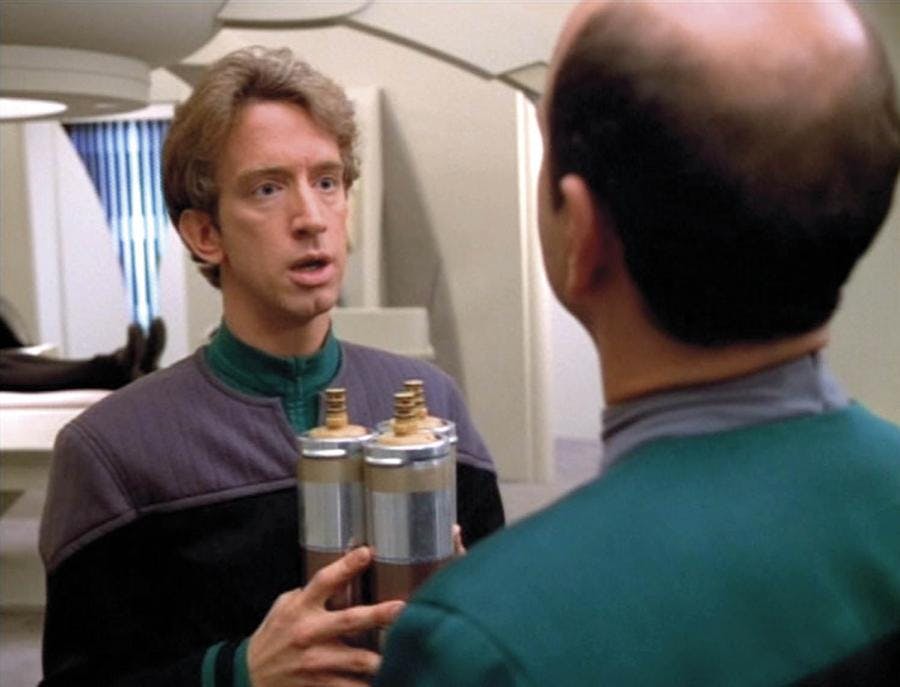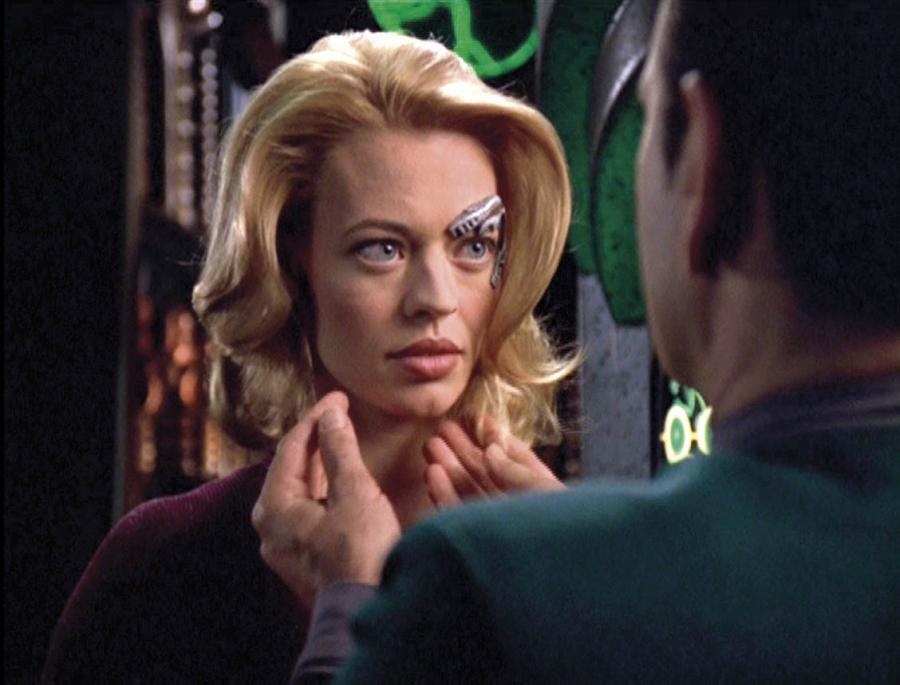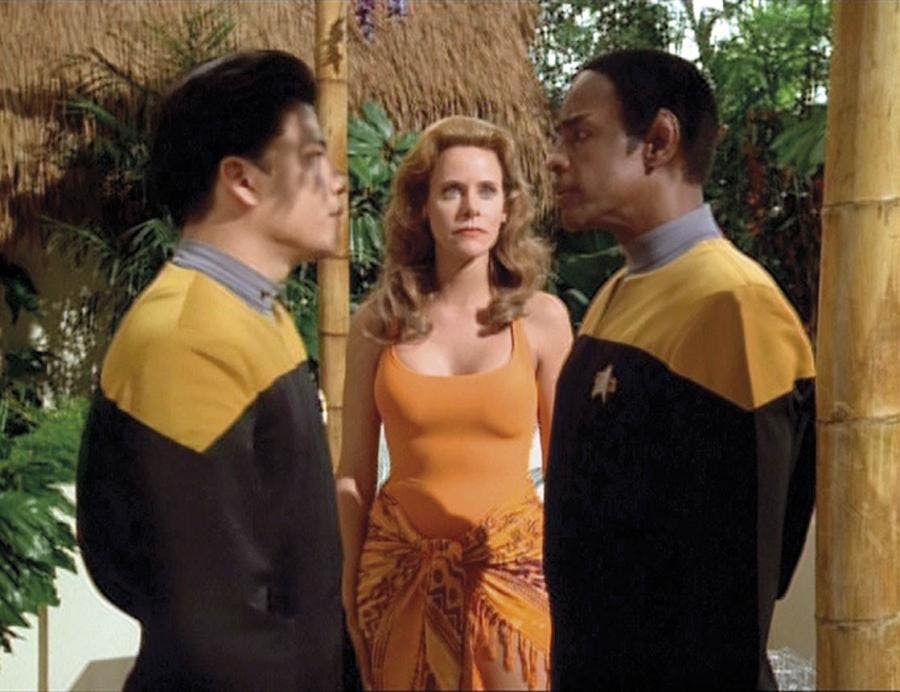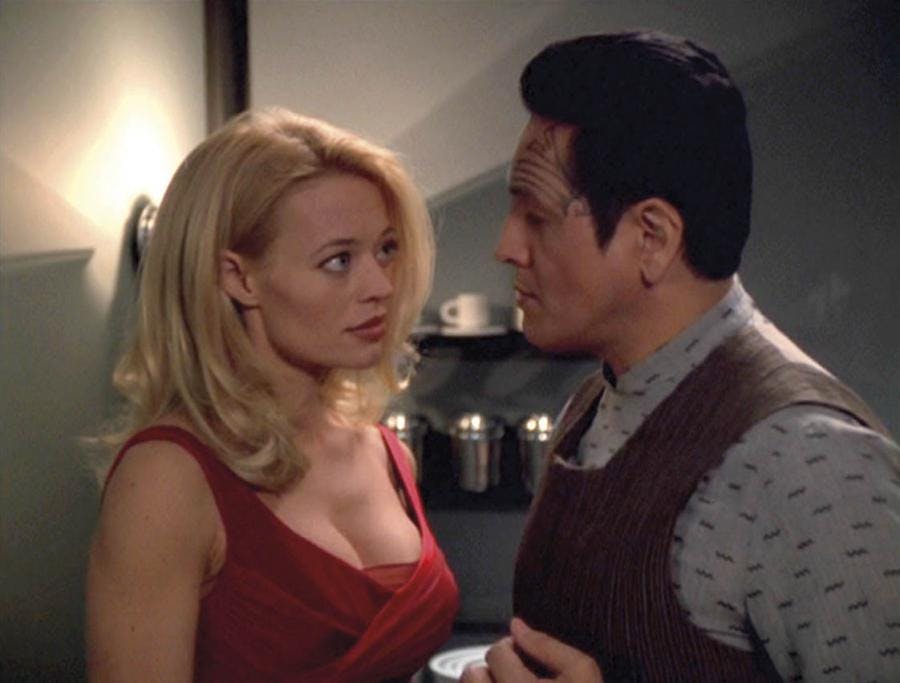Published Oct 6, 2012
Italian Star Trek Magazine: Holographic Love
Italian Star Trek Magazine: Holographic Love

Star Trek is a worldwide phenomenon. StarTrek.com frequently presents excerpts from the latest issue of Star Trek Magazine, which is published out of England and available internationally. And, as readers know, we’re also occasionally run theme pieces and interviews as they appeared in Inside Star Trek Magazine, the official Star Trek magazine of Italy. Today’s piece is a feature by Franca Scapellato that explores the idea of holographic love on Star Trek: Voyager. The story below had been translated from Italian into English by the magazine’s editors, and we’ve lightly edited it further with an eye toward retaining its original tone and rhythm.
What makes unique a promising science fiction series is the presence of an alien point of view. Let’s think about Spock, without whom the original series of Star Trek would not have been the same, or the comic character played masterfully by Robin Williams in Mork and Mindy, or John Crichton in Farscape, solitary hero capable to make “alien” – with respect to the reality around him – the “human being” himself. In Star Trek: Voyager there are, for what I’m concerned, at least two alien points of view: Seven of Nine and the Emergency Medical Holographic program (EMH). Both have a characteristic approach toward humanity: Seven is prudent, we may say that she is afraid (if we are not talking about a Borg) of the authentic meaning of what represents, for her personality as former drone, the fact to be a human female; the EMH, instead, explores without any reserve its own limits in order to overcome them and boldly go where no hologram has gone before. But what is the limit that no hologram can overcome? What is, just to use a typical Trek line, the last frontier? The answer that has popped in my mind has been love. A hologram cannot love.A hologram, in fact, is not better than a photonic projection generated by a computer, in a way, it is the esthetic display of a computer, it is the manner in which a computer mange to interface with the human beings, or more precisely to organic beings. For what we know today, it is impossible that a computer can have feelings, and therefore it is impossible that a hologram can feel anything.

And yet the Doctor “loves”. In the episode “Lifesigns”, the Voyager detects a distress signal coming from a ship the only passenger of which is a Vidiian woman suffering from Phage. Janeway gives the order to bring on board the alien and the Doctor puts on stasis the body, creating a temporary healthy holographic image of it. The woman – a hematologist by the name of Denara Pel – proves to be a charming and interesting person, to the point that the Doctor finds out, with surprise, to have some feelings for her that the members of the crew (Kes, Tom Paris) have no doubt to define as love feelings. This episode is one of the most beautiful hours of Star Trek: Voyager, perhaps because the EMH, in his “inexperience” or “simplicity”, shows us that the true love disregard, in its ideality, the physical attraction. During the episode we find out that there is someone who wants to kill Denara Pel, and this person is the same Denara Pel! The Vidiian woman does not want that that appalling body still lives, she is afraid that, if the holographic self, her “mind”, would be again trapped in the sick body that lays on the bad of the sickbay, Shmullus (the name the aliens has given to the Doctor) would not be capable of accepting her for what she is. The words the EMH uses to reassure her are very poetic and he tells her that his feelings will survive anyway, regardless of her physical appearance.

The holographic doctor has to collaborate, in spite of himself, with his alternate version of the Prometheus, an irritating Model 2 EMH, that treats him as galactic garbage. The Model 1 EMH will have thus the opportunity to have his revenge when, in listing to the Model 2 the improvements implemented to his program, he will say to have done a (small) “modification” to his original program, in order to have “sexual relationship with females.” Invaluable the expression on the face of the Model 2 who asks Model 1 to download this small modification in his database before coming back to the other side of the galaxy. The EMH, thus, not only loves in an ideal way, but it can have sex too! To be honest, also Data, the other informatics form of life known in the history of Star Trek, was “fully functional” and capable of “multiple techniques”. Who knows if the EMH’s lovers have been similarly and “completely” satisfied?



The ensign Vorik, after having tried to solve the problem in vain, first by asking lieutenant Torres to became his mate (and then attacking her when she refuses), then trying meditation, he accepts an innovative solution suggested by the EMH: to mate with an holographic mate! The experiment thus is not a complete success, because at the end of the episode Vorik goes on the planet below for challenging Torres, who has been infected by means of telepathy during the previous attempt of mating, to the rite of kal-if-fee, and get rid of the blood fever.


